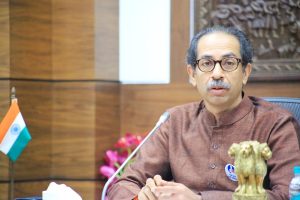I ndia’s research ecosystem stands on the cusp of a seismic shift with the impending rollout of the One Nation, One Subscription (ONOS) scheme, a Rs 6,000-crore initiative aimed at dismantling the long-standing barriers to accessing global academic resources. Boasting the promise of providing 13,000 international journals to over 6,300 institutions and nearly 18 million researchers and students, ONOS seeks to upend the narrative of restricted knowledge, which has long hampered Indian academia.
Yet, amidst the applause, one cannot help but ask: can this scheme genuinely revolutionize the Indian research landscape, or will it remain another incomplete policy, leaving many behind? The promise of ONOS is indeed significant. For institutions that currently cannot afford subscriptions, this initiative has the potential to level the playing field. It aligns with India’s growing aspirations to enhance its research output, which saw a 54 per cent rise between 2017 and 2022, more than double the global average of 22 per cent. India now ranks fourth globally in terms of research publication volume, producing over 1.3 million academic papers.
Advertisement
However, this numerical achievement is tempered by the quality and impact of the research. India lags behind in global citation indices, ranking ninth in the world, well below peers like China, the US, and the UK. This disparity raises critical questions about the accessibility and visibility of Indian research – a problem that ONOS can address, but only partially. The scheme’s reliance on centralized access assumes that all institutions have the means to effectively utilize these resources.
Advertisement
For elite institutions like the IITs, IISc, and AIIMS, which already have access to premium journals, ONOS offers a cost-saving advantage. However, for colleges and universities in tier-2 and tier-3 cities, the challenges run deeper. These institutions, often operating with meager budgets, lack not only access to journals but also the research infrastructure, training, and funding to conduct impactful studies. India spends only 0.7 per cent of its GDP on research and development, compared to the global average of 1.8 per cent. This figure is alarmingly low when juxtaposed with China’s 2.2 per cent and Israel’s 4.9 per cent, signalling a deeper systemic neglect of R&D.
Without parallel investments in research capacity and infrastructure, merely providing access to journals may not be enough to bridge the gap between top-tier and under-resourced institutions. Moreover, the ONOS scheme raises another critical issue: the uneven focus on STEM (Science, Technology, Engineering, and Medicine) disciplines. While it will undoubtedly benefit researchers in these fields, the humanities and social sciences remain an afterthought in India’s research ecosystem. These disciplines already suffer from poor output and global visibility. For instance, in 2020, India produced 26,127 gold open-access (OA) articles, predominantly in STEM fields, while research in social sciences and humanities barely made a dent in global databases.
This neglect is exacerbated by the lack of funding for humanities research, further marginalizing disciplines crucial for understanding societal issues. Can ONOS truly address the inequities across disciplines, or will it reinforce the STEM-centric nature of India’s research priorities? The problem extends beyond subscription access to the publication process itself. In the age of openaccess publishing, researchers face significant financial barriers. In 2020, Indian authors paid a staggering $17 million in Article Processing Charges (APCs) to publish their work in openaccess journals.
This represented more than half of the $30 million spent globally, with health sciences alone accounting for $7 million of the total. These costs are predominantly borne by researchers themselves, as most Indian institutions lack dedicated funding mechanisms for APCs. This contrasts sharply with developed countries where national policies often subsidize such expenses, ensuring that research remains accessible to global audiences. Without similar support, Indian researchers struggle to disseminate their work widely, further limiting its impact and citation scores. Even for STEM researchers, APCs pose a significant burden, but the humanities and social sciences are hit hardest. Journals in these disciplines often lack the funding and market size to adopt sustainable open-access models.
As a result, Indian research in these fields remains confined to limited local publications or locked behind expensive paywalls, accessible to only a few. This creates a vicious cycle: without global visibility, Indian social science research struggles to attract citations, funding, or recognition, perpetuating its marginalization. India’s education and research funding landscape amplifies the challenges ONOS seeks to address. Allocating just 3.85 per cent of its GDP to education well below the global average of 4.22 per cent and far behind Cuba’s 12 per cent India underfunds a system where over 50,000 colleges and 1,100 universities struggle with uneven quality, particularly in rural areas.
Research funding fares no better, with Rs 2,985 crore spent on journal subscriptions between 2019 and 2022, largely benefiting elite institutions while leaving smaller colleges and researchers behind. This imbalance stifles innovation and limits equitable access to knowledge. While ONOS is a step forward, it is no panacea. Addressing systemic barriers – like inadequate funding, exorbitant APC costs, and the neglect of humanities and social sciences – is critical. Without national APC funds, open-access mandates, and investments in underrepresented disciplines, India’s vision of global research leadership by 2047 risks becoming a pipe dream. Will ONOS empower all or widen existing gaps? The answer lies in what comes next.
(The writers are associated with the National Council of Applied Economic Research, New Delhi. The views are personal.)
Advertisement











